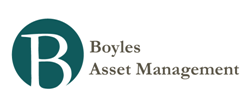Money and Finance
.................
Related link: Grant's Conference Fall 2012: Hoisington Presentation - The Fed vs. The 30 Year Treasury Bond
- Hussman Weekly Market Comment: Out On A Limb - An Investor's Guide To X-treme Monetary And Fiscal Conditions
Government intervention in the U.S. economy is approaching the point where probable long-term costs exceed short-term benefits – straining to maintain the pace of extraordinary fiscal and monetary measures that have repeatedly nudged the U.S. economy...
- Hussman Funds Semi-annual Report
The U.S. economy appears suspended at the boundary between tepid growth and recession, requiring a trillion-dollar federal deficit and unprecedented monetary easing simply to maintain that position. The Federal Reserve continues a well-known and fully-announced...
- The Gutenberg Economy - By Michael Lewitt
Adam Smith is spoken of as the father of modern laissez faire capitalism, as well he should be. But the market system Smith described in The Wealth of Nations (1776) no longer exists. Instead, it has morphed into a system of fiat money that owes its existence...
- Hoisington Q1 Letter
If the objectives of Quantitative Easing 2 (QE2) were to: a) raise interest rates; b) slow economic growth; c) encourage speculation, and d) eviscerate the standard of living of the average American family, then it has been enormously successful. Clearly,...
- Sprott December Comment: Is It All Just A Ponzi Scheme?
In the latest Treasury Bulletin published in December 2009, ownership data reveals that the United States increased the public debt by $1.885 trillion dollars in fiscal 2009. So who bought all the new Treasury securities to finance the massive increase...
Money and Finance
Hoisington Q1 2013 Letter
“The Federal Reserve is printing money”. No statement could be less truthful. The Federal Reserve (Fed) is not, and has not been, “printing money” as defined as an acceleration in M2 or money supply. Just check the facts. For the first quarter of 2013 the Fed purchased $277.5 billion in securities (net) as their security portfolio expanded from $2.660 trillion to $2.937 trillion. A review of post-war economic history would lead to a logical assumption that the money supply (M2) would respond upward to this massive infusion of reserves into the banking system. The reality is just the opposite. The last week of December, 2012 showed M2 at $10.505 trillion, but at the end of March, 2013 it totaled only $10.450 trillion which was an unexpected decline of $55 billion. Printing money? No.
This broad misconception of the Fed’s ability to print money has been widely embraced since the Fed began its massive balance sheet expansion near the end of 2008. It was then that the Fed expanded the monetary base from $840 billion to $1.7 trillion in a matter of months. Further, from the initiation of this misguided program to the end of March 2013, the Fed has expanded the monetary base from $840 billion to $2.93 trillion. The money supply indeed went up (35%) but not in proportion to the increase in the monetary base (249%). Presently, the year- over-year expansion of M2 is only 6.8%, which is nearly identical to its year-over-year growth rate in March of 2008 before the Fed decided to “help out the economy” (Chart 1). In other words, there is no evidence that the massive security purchases by the Fed have resulted in a sustained acceleration in monetary growth; nor is there evidence that economic conditions have improved.
.................
Related link: Grant's Conference Fall 2012: Hoisington Presentation - The Fed vs. The 30 Year Treasury Bond
- Hussman Weekly Market Comment: Out On A Limb - An Investor's Guide To X-treme Monetary And Fiscal Conditions
Government intervention in the U.S. economy is approaching the point where probable long-term costs exceed short-term benefits – straining to maintain the pace of extraordinary fiscal and monetary measures that have repeatedly nudged the U.S. economy...
- Hussman Funds Semi-annual Report
The U.S. economy appears suspended at the boundary between tepid growth and recession, requiring a trillion-dollar federal deficit and unprecedented monetary easing simply to maintain that position. The Federal Reserve continues a well-known and fully-announced...
- The Gutenberg Economy - By Michael Lewitt
Adam Smith is spoken of as the father of modern laissez faire capitalism, as well he should be. But the market system Smith described in The Wealth of Nations (1776) no longer exists. Instead, it has morphed into a system of fiat money that owes its existence...
- Hoisington Q1 Letter
If the objectives of Quantitative Easing 2 (QE2) were to: a) raise interest rates; b) slow economic growth; c) encourage speculation, and d) eviscerate the standard of living of the average American family, then it has been enormously successful. Clearly,...
- Sprott December Comment: Is It All Just A Ponzi Scheme?
In the latest Treasury Bulletin published in December 2009, ownership data reveals that the United States increased the public debt by $1.885 trillion dollars in fiscal 2009. So who bought all the new Treasury securities to finance the massive increase...

